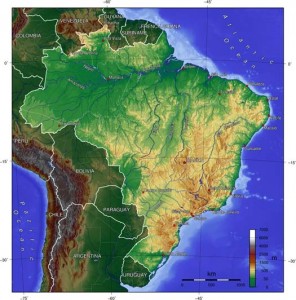- Lake Merín is a freshwater body shared by Uruguay and Brazil. Covering an area of some 5,000 km2, it is the second largest lake in South America, after Lake Titicaca in the Andes. The Lake Merín basin extends about 63,000 km2 on the Atlantic coast of South America.
- It lies in the temperate zone, with a subtropical climate and annual rainfall of 1,200 to 1,500 mm. Much of the rain falls from June to September, while November to December is usually the driest time of the year.
- On the Brazilian side, 97% of annual withdrawal is used for irrigation. During the summer months, especially in January, agricultural water use intensifies, reaching almost 99% of overall demand. Of this amount, 66% comes from the Merín-São Gonçalo basin, where vast paddy fields are common. The situation is quite similar on the Uruguayan side of the basin, where over 1,000 km2 of paddies produce 70% of Uruguay’s annual rice crop, and demand for irrigation water represents 99.8% of overall water consumption.
- Inland waterways are an important and economical means of moving goods in the Lake Merín basin, and in the context of the Southern Common Market (Mercosur). For example, rice and forestry products from Uruguay are transported through the eastern part of the Mercosur Waterway from La Charqueada, in Uruguay’s Treinta y Tres Department, to the Atlantic port of Rio Grande in the Brazilian state of Rio Grande do Sul for access to regional and international markets.
The section “Did You Know…?” is taken from the 3rd World Water Development Report “Water in a Changing World“.


